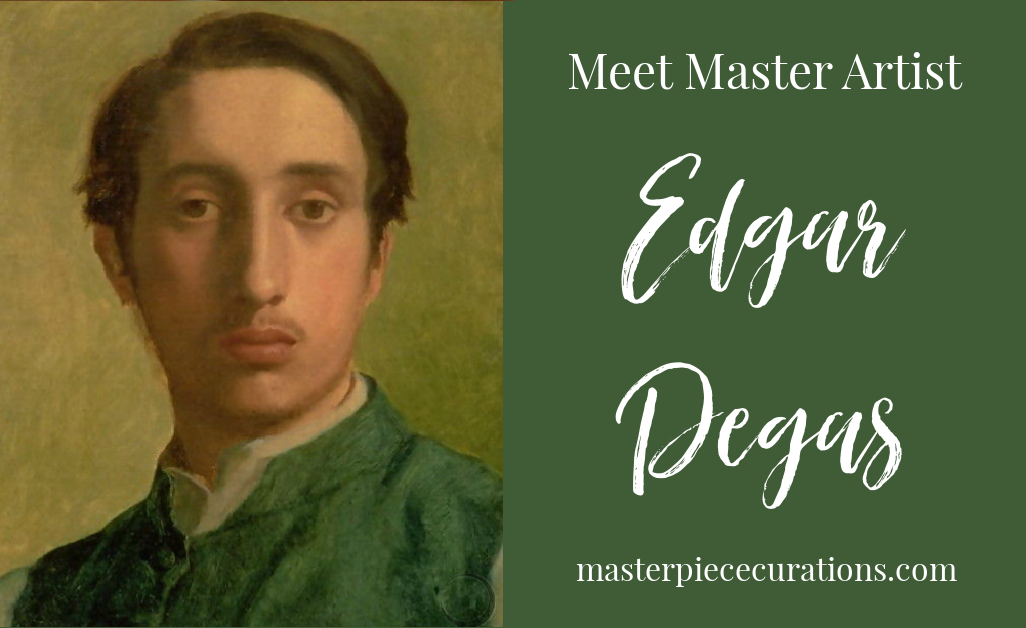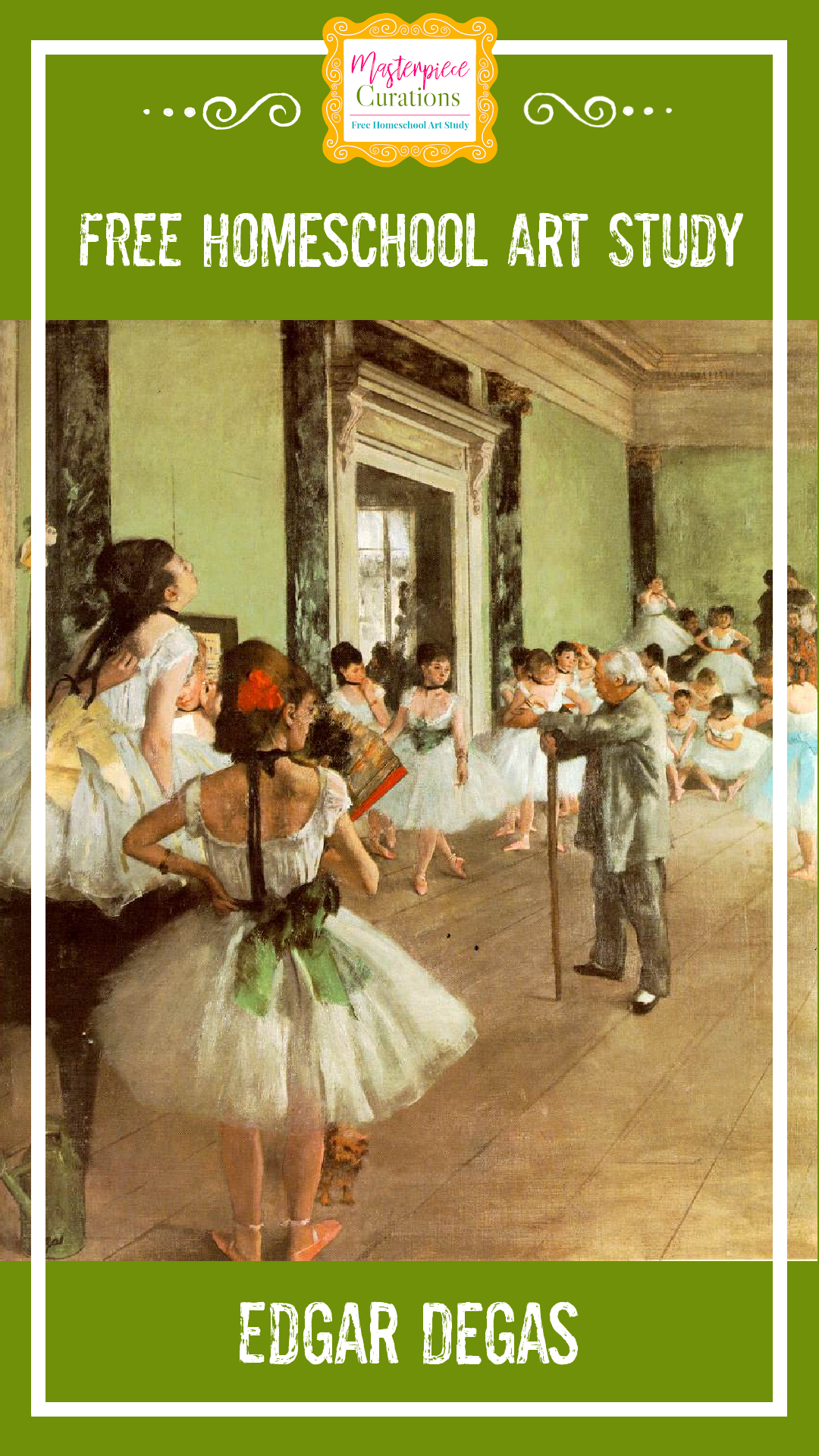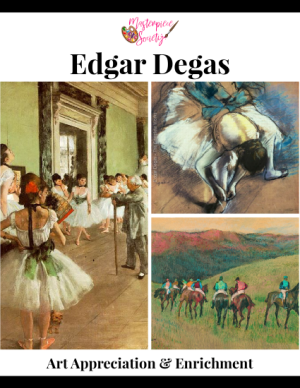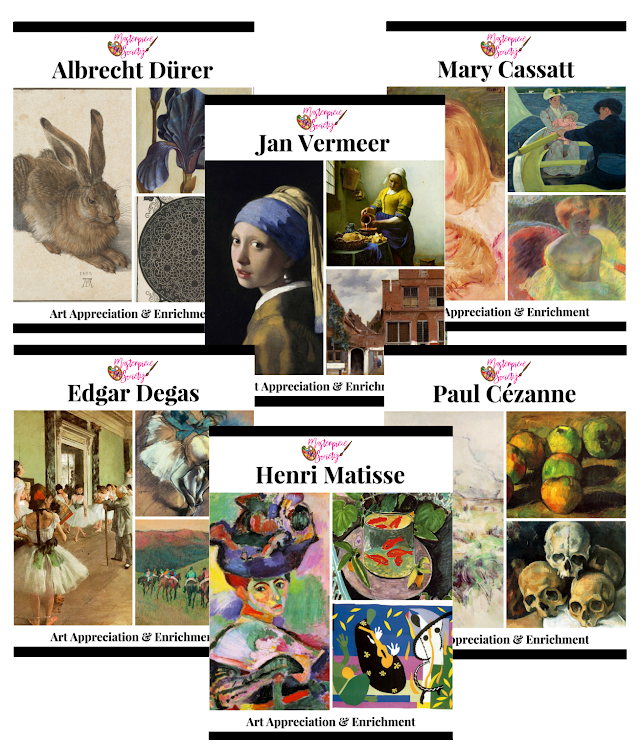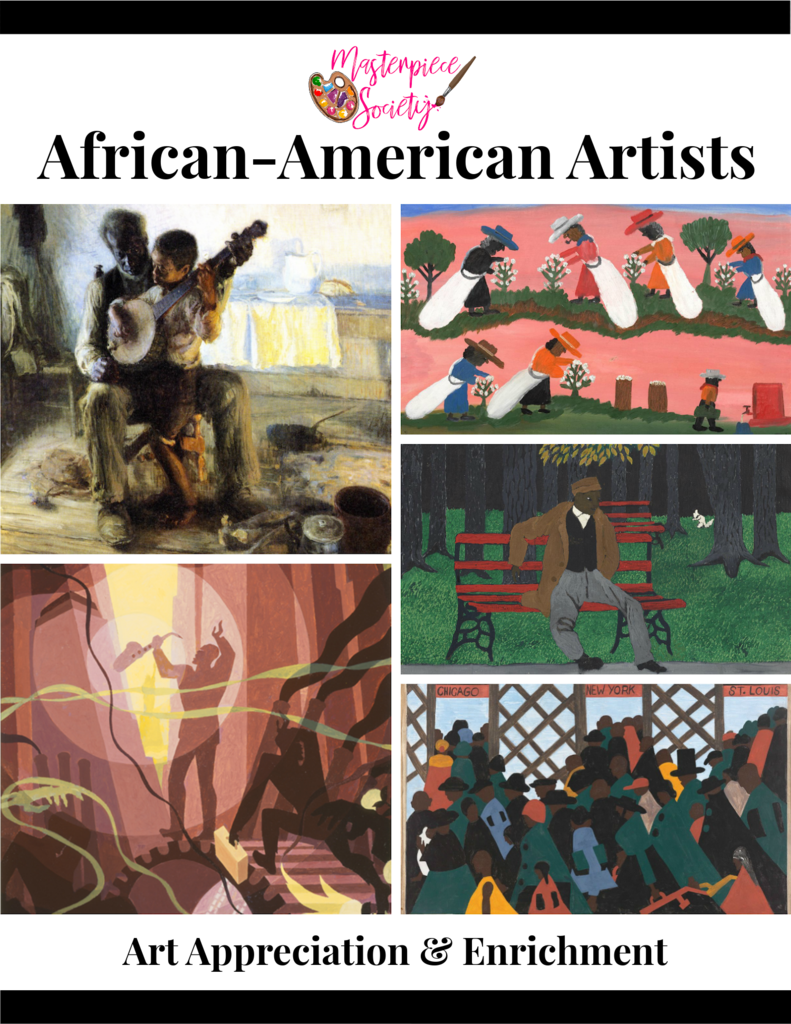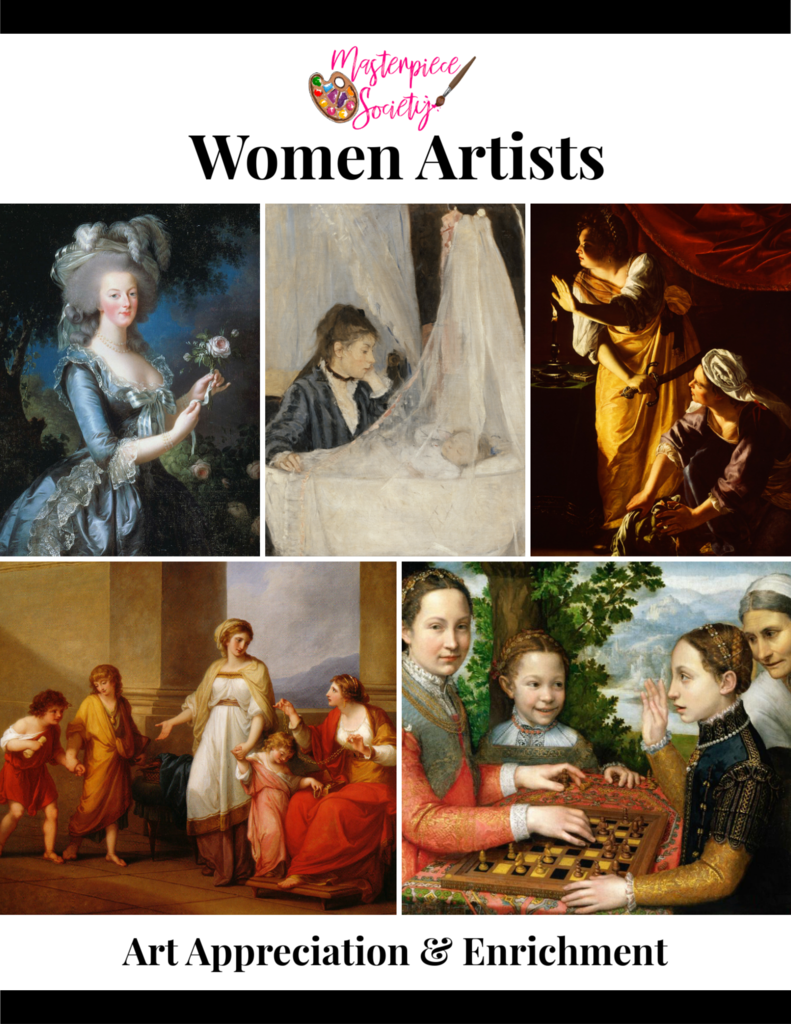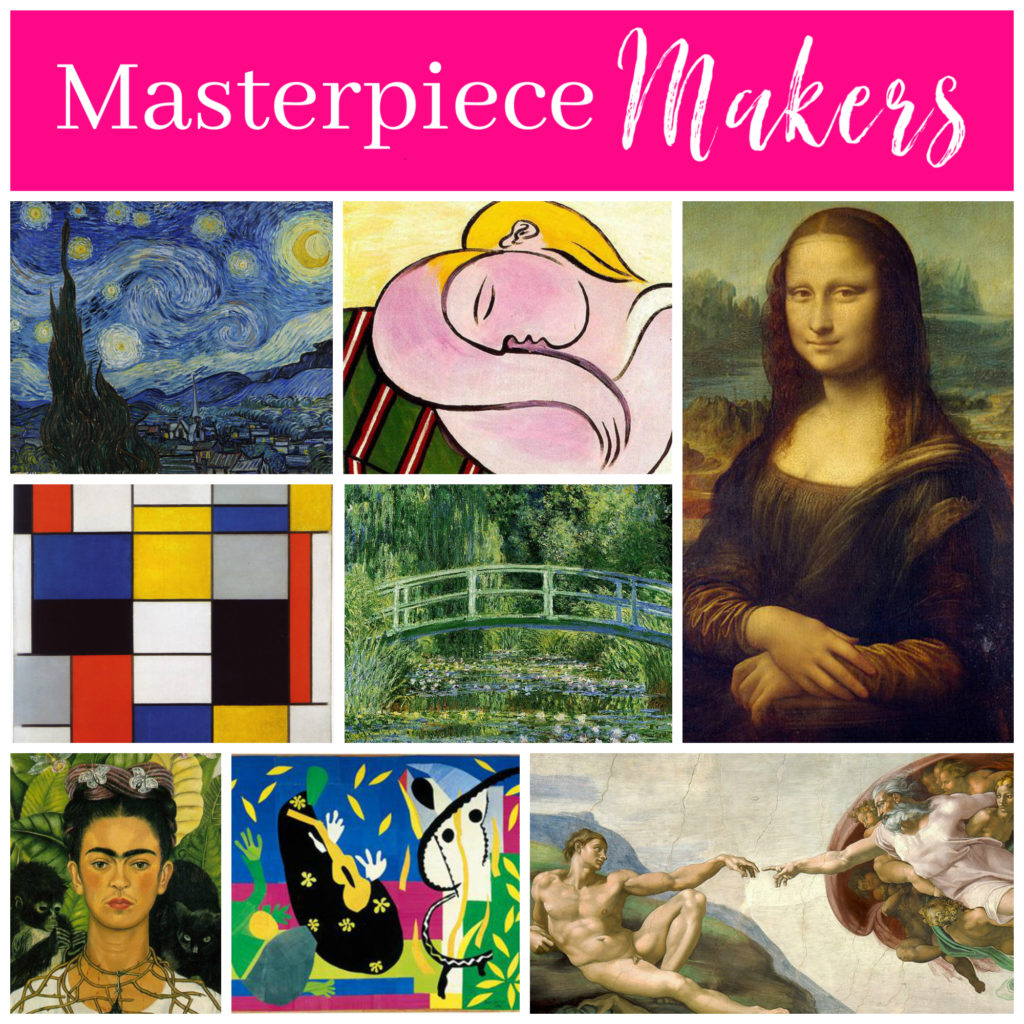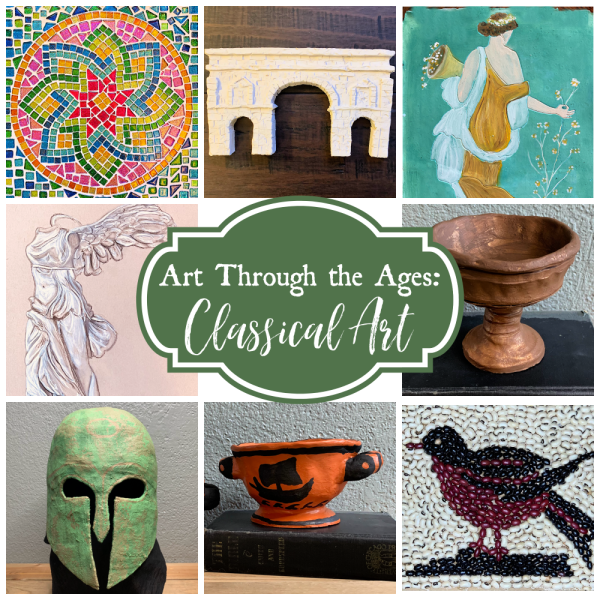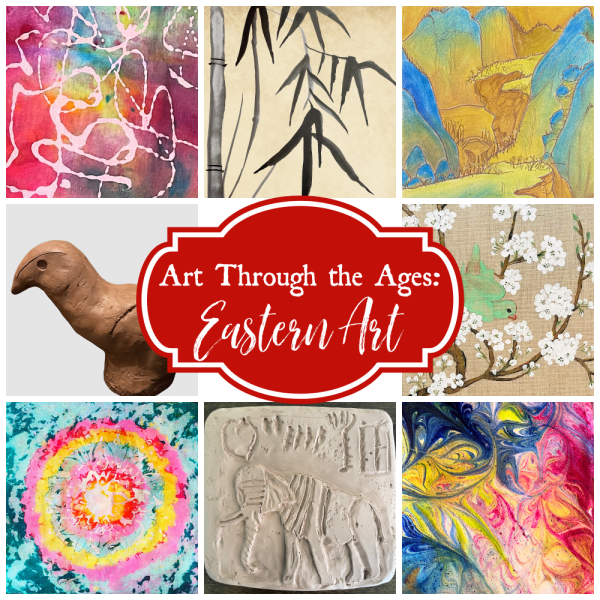Let’s meet famous artist Edgar Degas, was he a realist or impressionist? Let’s learn more about this amazing artist. Free homeschool artist study for the whole family!
Edgar Degas Early Life
Edgar Degas (pronunciation) was born on July 19, 1834, into a wealthy bourgeois family in Paris, France. His father was a successful banker and his mother, an American from New Orleans, had been an amateur opera singer. Sadly, she died when he was only 13 years old. Edgar received a strict classical education at school. And since his father loved the arts, he taught his son to appreciate art and music (even hosting recitals in their home). He encouraged Edgar to express himself in a variety of forms, and from a very early age, he showed extraordinary talent in drawing and painting.
It was common in those days for aspiring artists to go to the Louvre museum and copy the paintings of the old masters. This would help them hone their skills and develop their own techniques. When Edgar was 18, he applied to be a “copyist” there and was granted permission to do so. He would spend long hours at the Louvre studying and attempting to replicate the works of the old masters such as El Greco and Raphael.

Learning About the Arts
Although his father was a strong supporter of the arts, he encouraged Edgar to become a lawyer, so he attended law school for a short period before dropping out and attending art school. After art school, Edgar traveled to Italy where he lived with extended family for three years. While there, he studied the works of the Italian Renaissance masters: Raphael, Da Vinci, Michelangelo, and Titian. When he returned from Italy to Paris, he painted a portrait of his Italian family called, The Bellelli Family. It is a beautiful painting, but the way he captured them suggested an unhappy marriage between his aunt and uncle and a sense of uneasiness in the two daughters caught in the middle.
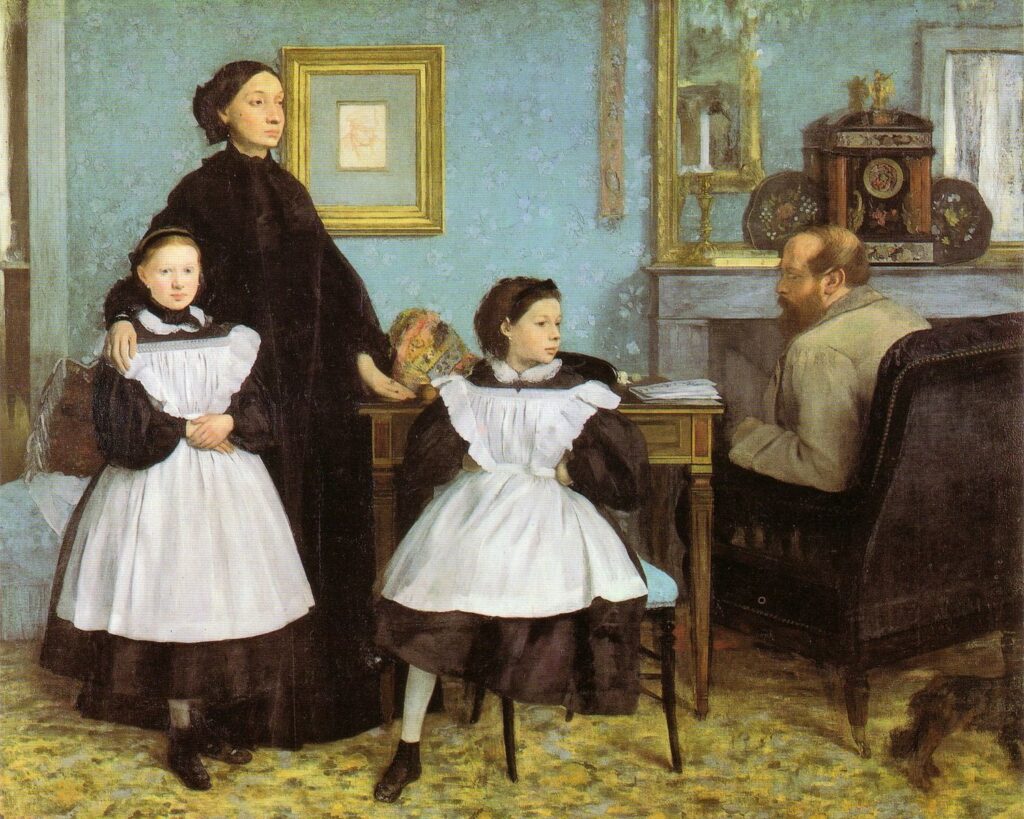
Edgar Degas’ Career Begins
He also continued as a copyist at the Louvre. And on a cold January day in 1862, while etching a Velázquez piece into an engraving plate, he met an artist named Édouard Manet. This encounter was a turning point in Degas’ career. The two men became good friends despite their differing personalities and artistic views and would remain so throughout their lives. He exhibited his work for the first time in 1865 at the Salon, the annual art exhibition of the Academy of Arts in Paris, but didn’t draw much attention.
His first works were of historical events, but he soon grew tired of the classical style of painting that the Salon preferred. Although he continued to exhibit there each year, he began depicting more contemporary subject matter (influenced by Manet) which the art establishment frowned upon. During the Franco-Prussian War in 1870, Degas enlisted in the French National Guard to help defend Paris. Two years later, he accompanied his brother to New Orleans, Louisiana to spend time with his maternal family. While there, he painted one of his more famous works from this period, A Cotton Office in New Orleans. It was also at this time that Degas realized his eyesight was deteriorating.

An Artist’s Fading Sight
He attributed his eye problems to the frigid weather conditions he experienced while on guard duty during the war and the bright sunshine he was exposed to in New Orleans. His eyes were so sensitive to bright light that he could no longer tolerate working outside and was forced to begin working indoors. The dimly lit environments of the opera house and ballet would become much more favorable to work in due to his failing sight. In 1874 his father died, and shortly thereafter, he learned that his brother had acquired an enormous amount of debt in his business. Edgar was forced to sell the family home and the art collection he had inherited from his father to protect his family’s reputation. Now, for the first time in his life, he would have to earn a living by selling his own art.
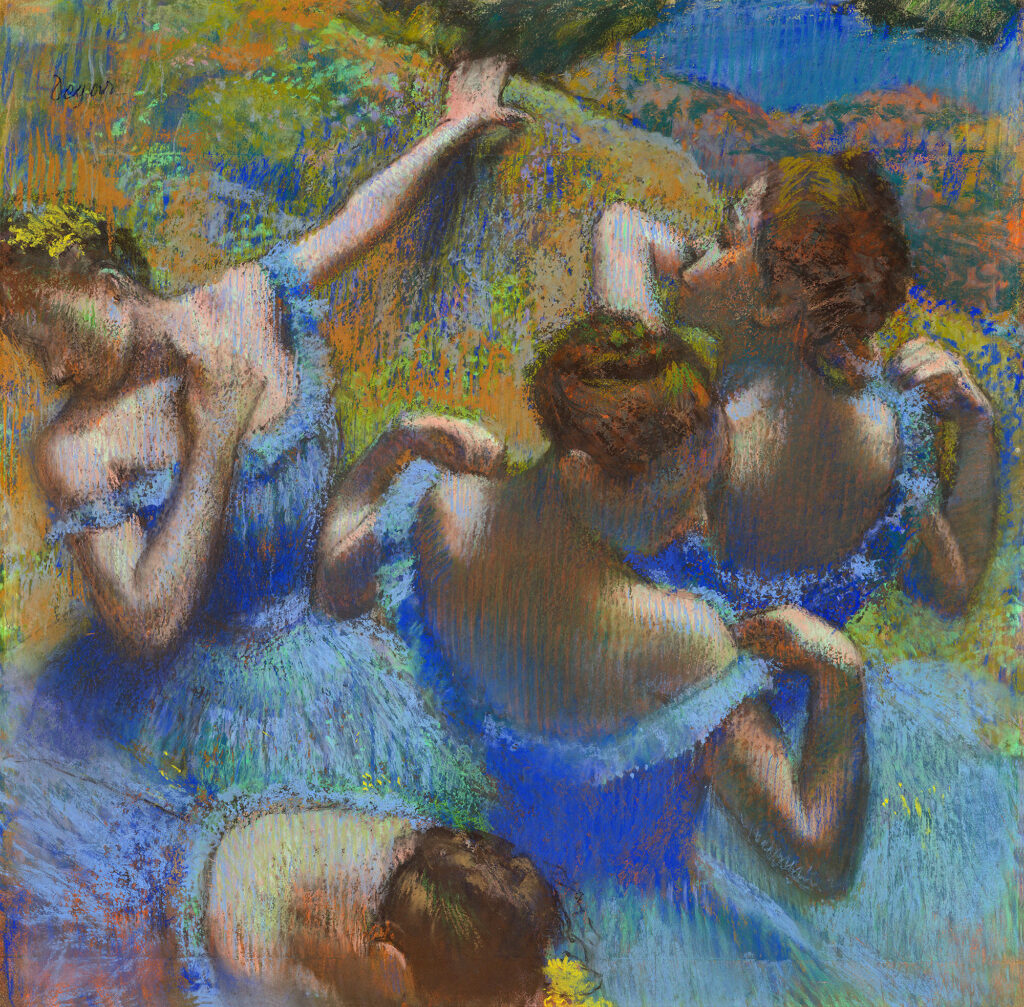
Edgar Degas and The Salon
That same year, Degas joined a group of young artists who were disenchanted with the art establishment of the Salon. They decided to hold their own exhibition. These artists were: Claude Monet, Pierre-Auguste Renoir, Alfred Sisley, Paul Cézanne, Berthe Morisot, and others (although his friend, Édouard Manet declined to exhibit with them). They called themselves the “Anonymous Society of Painters, Sculptors, and Engravers,” but would come to be known as the “Impressionists.” Degas was one of the leaders of this group, playing a vital role in organizing the exhibitions and deciding which artists were invited to participate.
Although many consider him an Impressionist artist, he despised the name, preferring to associate himself with Realism, an art movement from the 1840s through the 1880s, that stressed the natural, realistic representation of objects and figures in ordinary life. While most of the Impressionists loved to create en plein air (outside), Degas preferred to create indoors. And rather than spontaneously capturing a moment in time, he studied his subjects carefully, meticulously capturing their movement, odd angles, or awkward positions.

Little Dancer of Fourteen Years
Edgar Degas had very little in common with most of the Impressionists and was often argumentative and hard to get along with. Still, he exhibited in seven out of eight of their exhibitions before the group went their separate ways in 1886. As his artwork began to sell, his financial situation improved. He once again began collecting artwork, this time from his art mentors such as Jean-Auguste-Dominique Ingres and Delacroix, contemporary artists he admired such as Manet, Cézanne, and Van Gogh, as well as some of the old masters. By age 57, his eyesight had failed him, and he became nearly blind. So, he turned to create sculpture since it was a more tactile (touchable) form of art. His best-known sculpture is called, Little Dancer of Fourteen Years, which was harshly criticized at the time.
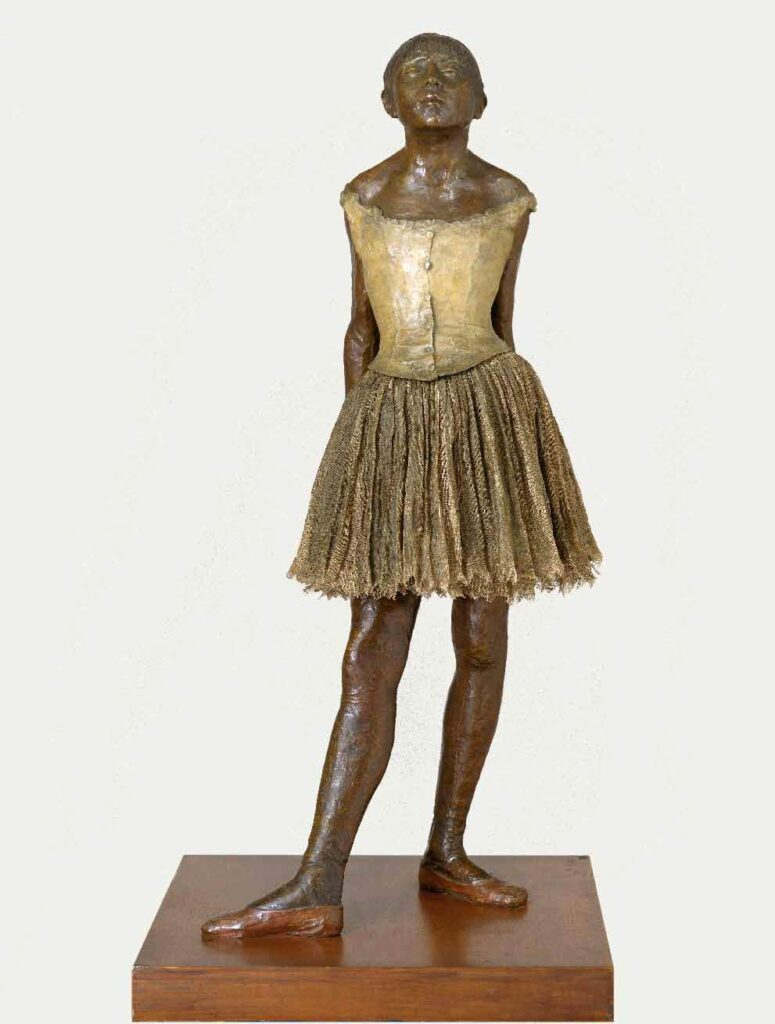
Edgar Degas Death
In his later years, Degas alienated himself from many of his friends. Although, he did maintain a forty-year friendship with American Impressionist artist, Mary Cassatt and a handful of others. He never married, believing an artist should live alone. He once said, “I, marry? Oh, I could never bring myself to do it. I would have been in mortal misery all my life for fear my wife might say, ‘That’s a pretty little thing,’ after I had finished a picture.” Edgar Degas died blind and alone on September 27, 1917, at 83.
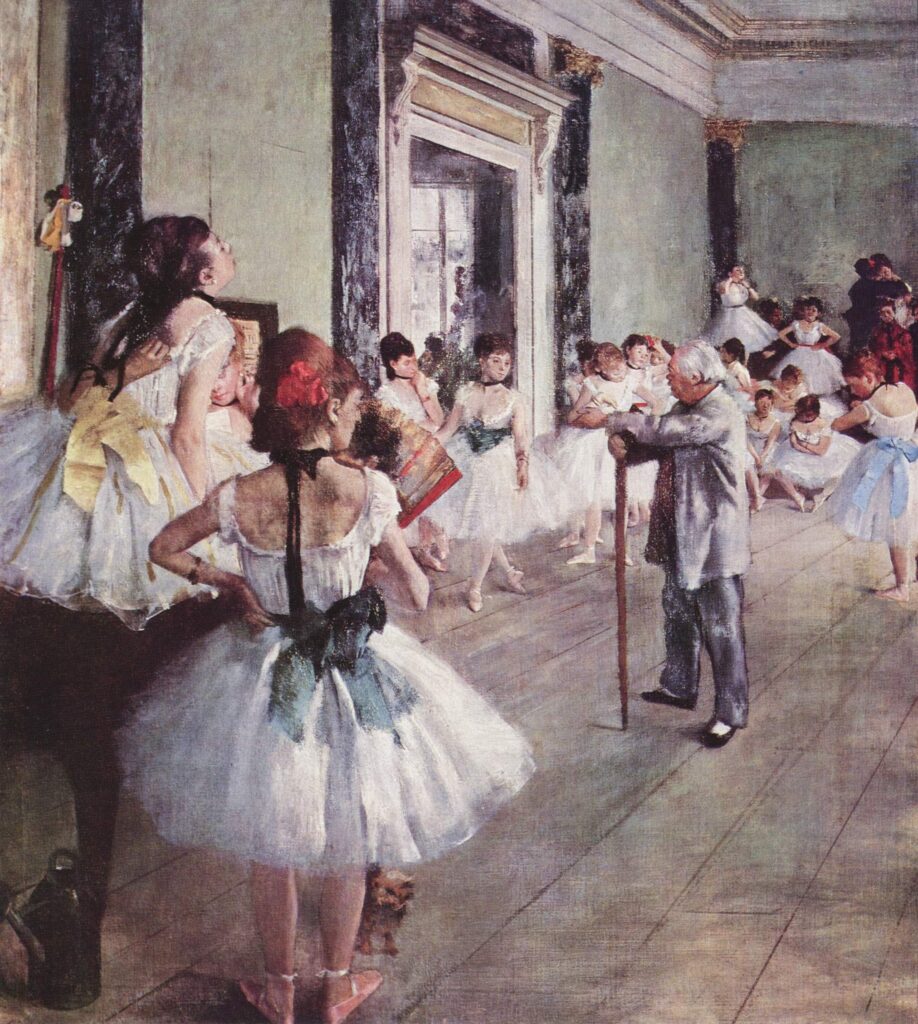
Want to experiment with Degas’ art? In my Mixing with the Masters, Volume Two lesson on Degas, we learn even more about him and create three pieces inspired by some of his masterworks. Purchase the entire course (including six master artists) for $79, or just the Degas lesson for $15:
Book Recommendations for Further Study:
Degas: His Life and Works in 500 Images Degas and the Little Dancer (Anholt’s Artists Books For Children)
Degas and the Little Dancer (Anholt’s Artists Books For Children) Edgar Degas (Getting to Know the World’s Greatest Artists)
Edgar Degas (Getting to Know the World’s Greatest Artists) Degas
Degas Chasing Degas
Chasing Degas Edgar Degas: Paintings That Dance: Paintings That Dance
Edgar Degas: Paintings That Dance: Paintings That Dance Degas: Beyond Impressionism
Degas: Beyond Impressionism

From the Masterpiece Society…
Degas Art Appreciation StudyBuy NowEdgar Degas Art LessonsBuy NowEdgar Degas Spotlight PacketBuy Now
Degas Virtual Tours
Catch a glimpse of The Dance Class from Smarthistory:
Look inside the Visit to a Museum from Smarthistory:
Meet The Bellelli Family from Smarthistory:
Below is a video of At the Races in the Countryside from Smarthistory:
Woman Bathing in a Shallow Tub from Smarthistory:
For more project ideas, check out these Edgar Degas-inspired art projects here:
Degas Ballerinas by Kim Weissenborn
Degas with Chalk by Renee Lannan’s Blog
Popsicle Stick Ballerinas by Glued To My Crafts

